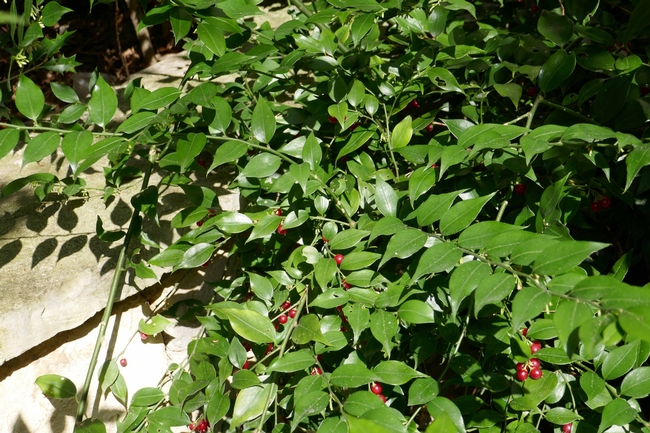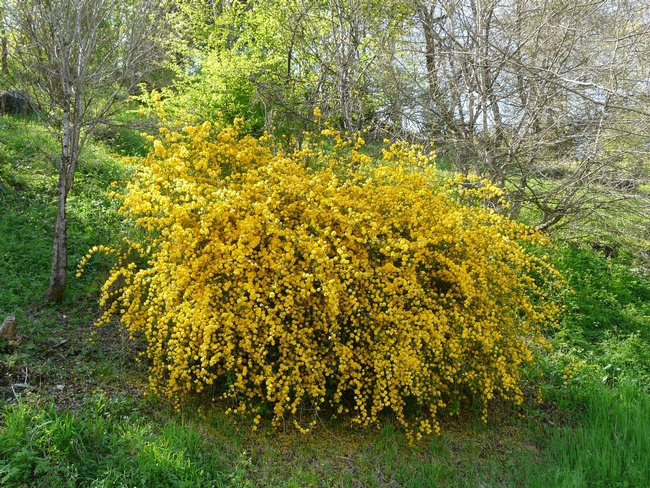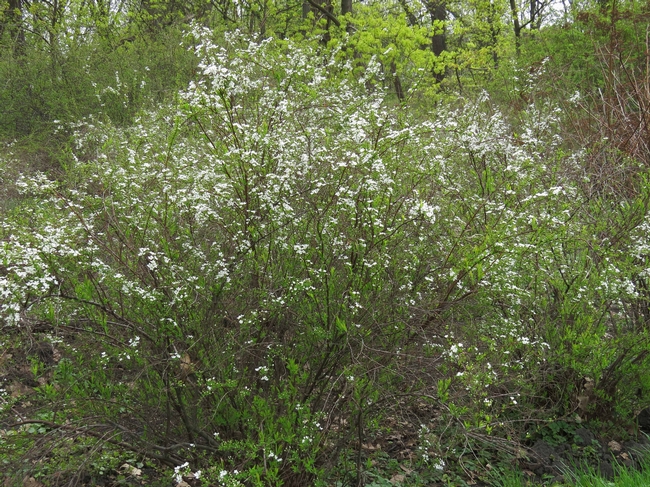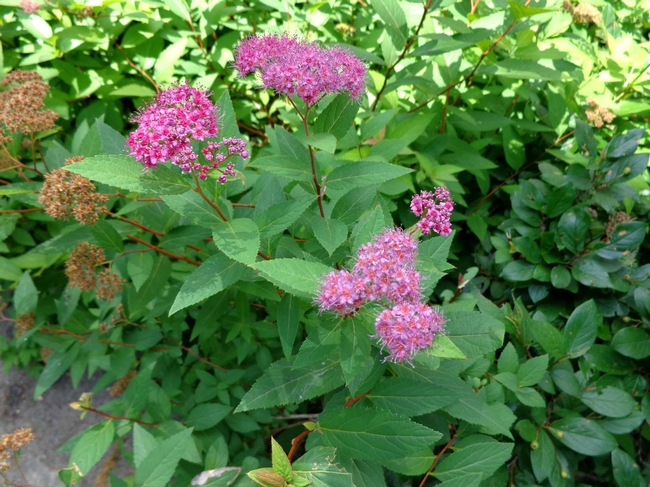By Jeanne Lawrence, UC Master Gardener of Butte County, July 13, 2018
Sarcococca ruscifolia with berries, Wikipedia
Kerria japonica pleniflora, Wikipedia
Spiraea thunbergii in flower, Wikipedia
Spiraea japonica Anthony Waterer
Spiraea thunbergii is a bridal wreath type that can reach six feet high and wide, with many thin, arching branches. In early spring, the bare branches are lined with clusters of tiny white flowers. These are followed by very narrow, inch-and-a-half-long, blue-green leaves that turn yellow or reddish brown in the fall. Another stunning bridal wreath type is the fast-growing S. x vanhouttei. On this shrub, diamond-shaped blue-green leaves emerge first, followed by flat clusters of white blossoms covering the plant in mid to late spring.
Spiraea vanhouttei flowers and foliage, Wikipedia
By planting several different species of Spiraea, you can have blooming shrubs in shadier areas of the garden from early spring into summer, with the added bonus of beautiful fall colored leaves, and often, brightly-colored bare stems in winter.







